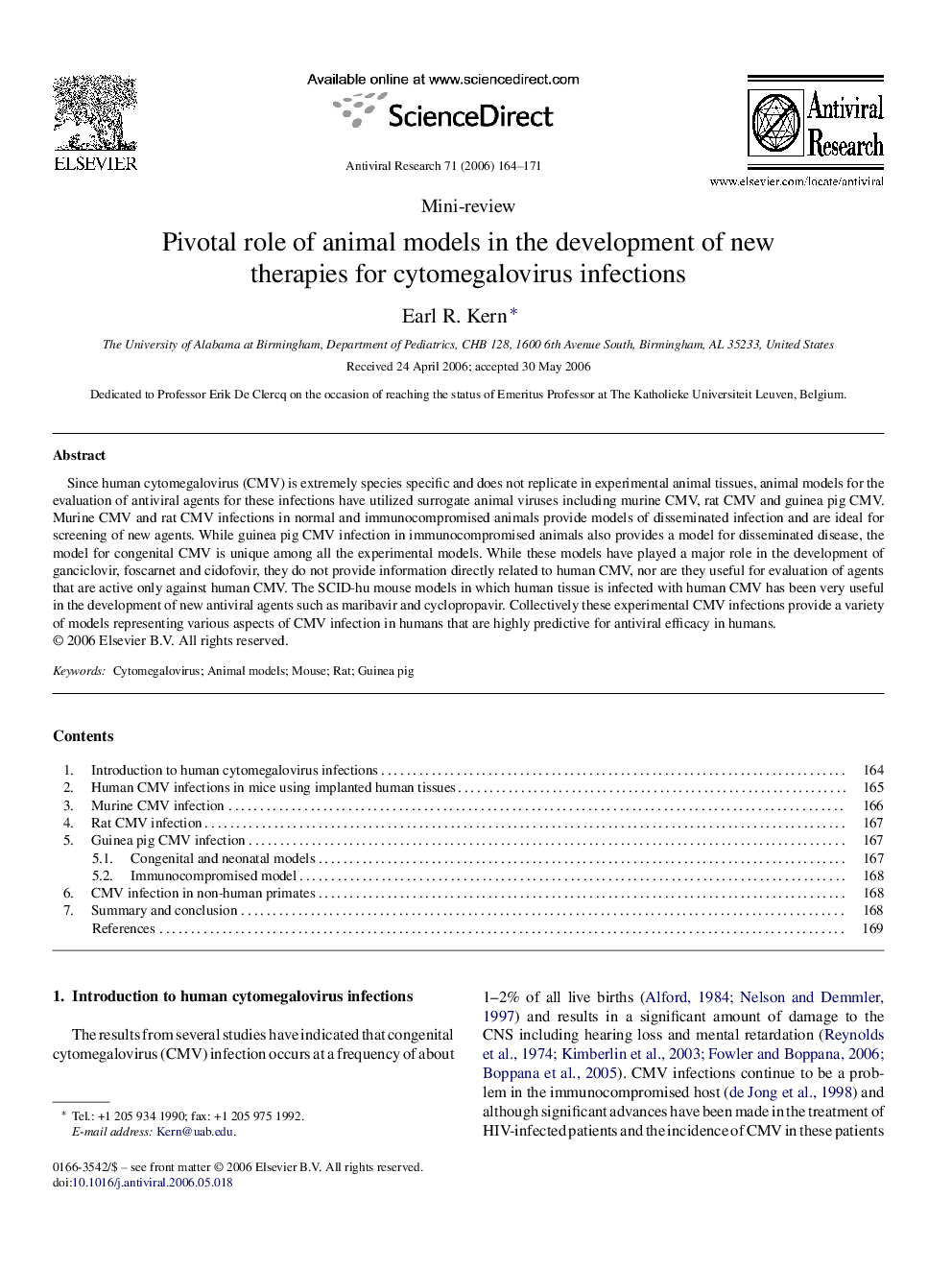| کد مقاله | کد نشریه | سال انتشار | مقاله انگلیسی | نسخه تمام متن |
|---|---|---|---|---|
| 2511544 | 1557846 | 2006 | 8 صفحه PDF | دانلود رایگان |

Since human cytomegalovirus (CMV) is extremely species specific and does not replicate in experimental animal tissues, animal models for the evaluation of antiviral agents for these infections have utilized surrogate animal viruses including murine CMV, rat CMV and guinea pig CMV. Murine CMV and rat CMV infections in normal and immunocompromised animals provide models of disseminated infection and are ideal for screening of new agents. While guinea pig CMV infection in immunocompromised animals also provides a model for disseminated disease, the model for congenital CMV is unique among all the experimental models. While these models have played a major role in the development of ganciclovir, foscarnet and cidofovir, they do not provide information directly related to human CMV, nor are they useful for evaluation of agents that are active only against human CMV. The SCID-hu mouse models in which human tissue is infected with human CMV has been very useful in the development of new antiviral agents such as maribavir and cyclopropavir. Collectively these experimental CMV infections provide a variety of models representing various aspects of CMV infection in humans that are highly predictive for antiviral efficacy in humans.
Journal: Antiviral Research - Volume 71, Issues 2–3, September 2006, Pages 164–171